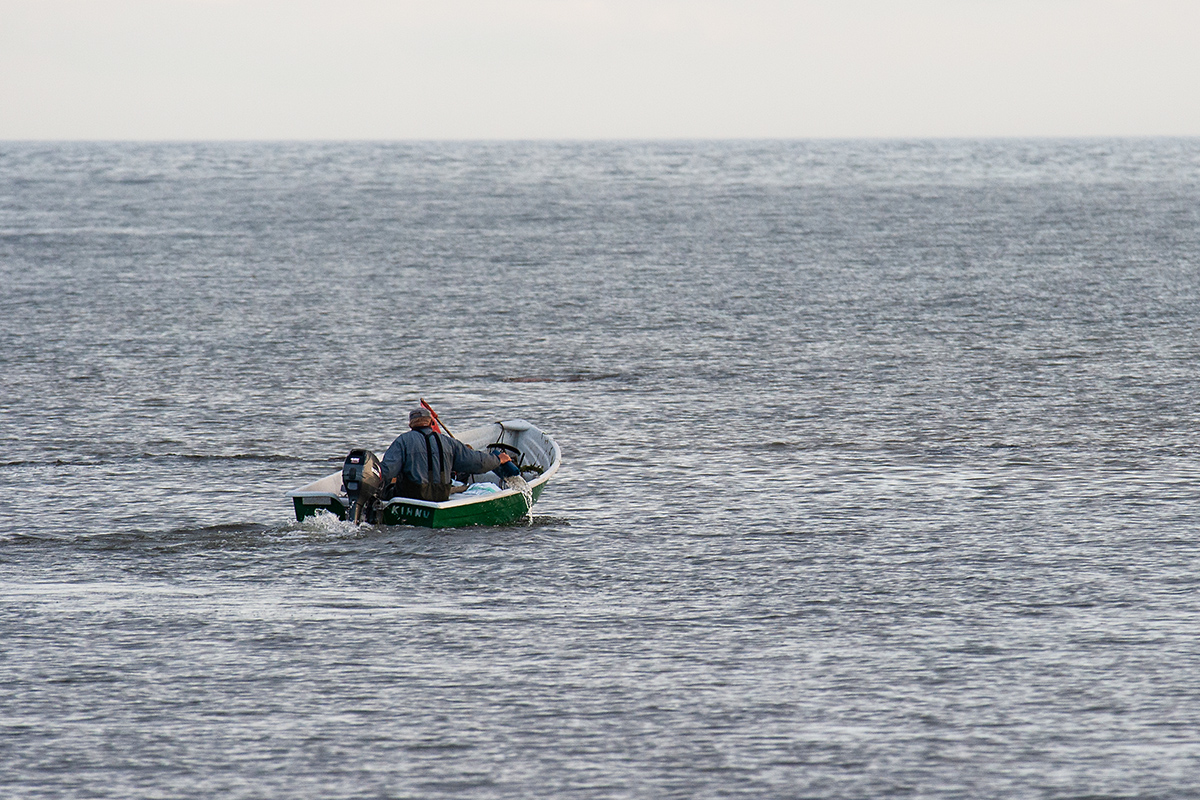Fishing is an ancient practice: the diverse fish fauna of the world’s waters has been a valuable source of food for humans for thousands of years

There are over 30,000 species of fish in the world. There are 91 fish species registered in Estonian waters, most of which are freshwater fish, semi-migratory fish (e.g. vimba, ide), or migratory fish (salmon, brown trout, eel). There are about 30 species of sea fish in the Estonian coastal waters; several of them are here accidentally. However, as the sea surrounding Estonia is brackish, it is also suitable for many freshwater fish as a living environment.
Many fish are economically important, providing fishing opportunities for commercial fishermen and food for amateurs.
Commercial fishing
Commercial fishermen make sure that there is enough highly valuable food – fish – on our table. The arsenal of commercial fishermen includes gillnets (gill net, trammel net), traps (various fish traps), and seines (seine nets and trawls).
Commercial fishing is divided into:
- fishing on inland waters;
- coastal fishing;
- trawling in the Baltic Sea;
- long-distance fishing.
Of the inland waters, commercial fishermen fish the most in Lakes Peipsi and Võrtsjärv, while the largest catches of coastal fishing are concentrated in Pärnu County, although the largest number of coastal fishermen live in Saaremaa (incl. Ruhnu island). When trawling in the Baltic Sea, registered vessels catch Baltic herring and sprat. Long-distance fishing is fishing outside the Baltic Sea. Long-distance fishing vessels flying the Estonian flag have fishing rights in three waters: in the Svalbard archipelago and in the North-West and North-East Atlantic. [1]
Bream, pike, zander, perch, and roach are mainly caught in Estonian inland waters. The main fishes caught in the coastal sea are the Baltic herring, flounder, and perch [1]. Catch data by year can be viewed on the website of the Agriculture and Food Board (data from 2019) and the website of the Ministry of Rural Affairs (data from 2004-2018).
Recreational fishing
The importance of recreational fishing lies mainly in the recreation aspect: it is a good reason to spend time in nature and fish for fun. Although recreational fishing often has an entertainment quality (for example, numerous fishing competitions are organised), the importance of recreational fishing in society cannot and should not be underestimated: the sale of recreational fishing permits generates almost as much revenue for the state as fees from commercial fishing rights [1], and recreational fishing creates jobs in the tourism and trade sectors.
Recreational fishing is conditionally divided into three:
- line fishing with one simple hand line;
- fishing under recreational fishing permit;
- fishing under a fishing card.
The first is free under the principle of the freedom to roam, the second and third are paid recreational fishing rights.
Recreational fishermen fish mainly with lines, such as hand lines, spinning reels, and fly hooks, less frequently with gill nets and longlines. Recreational fishing is quite popular in Estonia, which is illustrated, for example, by the fact that in 2020, permits for recreational fishing rights were acquired 87,267 times and a further 41,516 fishing cards were issued. However, the actual number of catchers is much higher, as fishing with a simple hand line does not require a permit, nor do pensioners, pre-school children, schoolchildren, unlawfully repressed, and disabled people have to pay for the right to fish.
Information on fisheries is shared by the Fisheries Information Centre – https://www.kalateave.ee/en/.
Last modified: 20.06.2022
__________________________________________________
[1] T. Armulik, S. Sirp (koost.). Eesti kalamajandus 2019. Kalanduse teabekeskus, 2020. http://www.kalateave.ee/images/pdf/Eesti_kalamajandus_2018_veeb.pdf